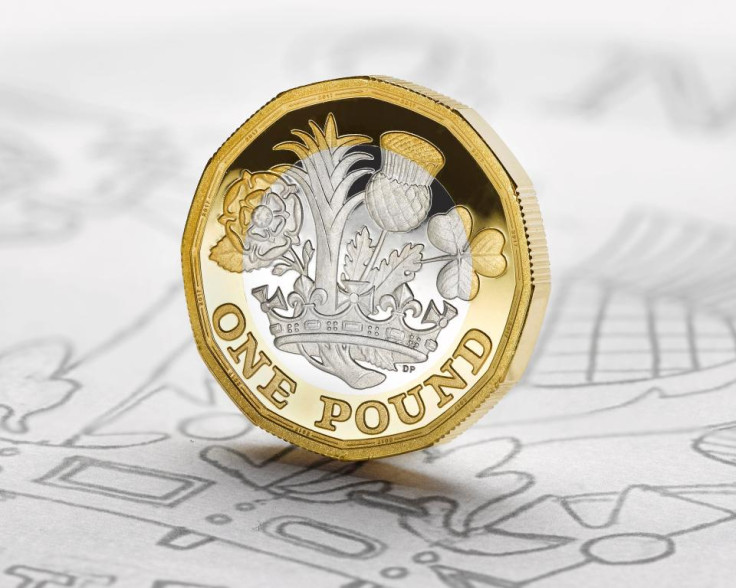The Royal Mint's top-secret security patents behind the new £1 coin
The 'most secure coin in the world' uses new techniques to combat counterfeiting.
The UK is set to introduce a brand new £1 coin. Over 1.5 billion coins have been produced in the Royal Mint's high-security facility in Wales, and these are intended to replace the old £1 coins many of which have been in circulation since 1983.
The old coins will cease to become legal tender on 15 October and so savers have only a few months to fish these old coins out of their piggy banks before they become worthless.

Why do we need a new £1 coin?
One reason prompting the rapid switch is the high instance of counterfeiting. The Royal Mint estimates that one in every thirty of the old coins is fake – and so there may be as many as 46 million counterfeited coins in circulation. The new £1 coin is thinner, lighter, bigger and moreover comes replete with security features that should make it a lot more difficult for counterfeiters to replicate.
Security features to combat forgery
The new £1 coin is bi-metallic – a gold-coloured ring around a silvery core. It is 12-sided, with grooves on alternate sides, and includes micro-lettering on an inner rim which reflects the year of production. Other intricate surface features include a panel under the Queen's head which displays either a pound symbol or a 1 digit depending on which angle you view it.
These features will make it a lot more difficult for forgers to duplicate the new coin which the Royal Mint has touted as the most secure coin in the world. However, given time, these features could be copied also, and so one additional top secret security measure has been added as a final hurdle against counterfeiters.

This has been described by the Royal Mint in interviews and on its website as a "patented high-security feature", and Royal Mint coin technicians have merely implied that it is an adaptation of banknote technology which allows electronic detection of counterfeits at high speed.
Royal Mint's secret patented technology
It is understandable why the Royal Mint may wish to keep the details of the new anti-counterfeiting technology a secret – it makes life more difficult for would-be forgers. However, it may be possible to predict what these "secrets" are ahead of the official launch of the new £1 coin – by looking at the patents in the Royal Mint portfolio. It is possible to do this because all patent applications are published before they are granted. Thus, to contradict the title of this article, there isn't such thing as a "patented secret" – a common misconception about patents.
It seems that this new technology relates to the application of luminescent particles during the electro-plating process. This ensures that the special particles don't merely form a coating, but are actually part of the alloy of the material forming the new coin. This makes the security feature durable, and able to withstand the high temperatures and pressures of the manufacturing process. This also means that the new £1 coin may glow under ultraviolet light (similar to the way some modern banknotes do) to indicate authenticity.

Alternatively, and more subtly, the new coins may glow in a part of the electromagnetic spectrum not visible to the naked eye. In either case, the specific electromagnetic signature given off will be an indicator of authenticity that will be detectable using special sensors. This tallies with what has been made public about this feature, including the ability to detect fakes electronically at high speeds.

This and the other security features of the new coin make it significantly more difficult to forge the coin.
The Importance of a Patent
But why have the Royal Mint patented this technology? A patent grants you a monopoly on some technology. But surely this is something that the Royal Mint already holds on the new £1 coin, as they are the only organisation authorised to bring it into circulation within the United Kingdom? The patent is unlikely to be used against counterfeiters as forging £1 coins will attract a far sterner sentence than infringing a patent.
What is important to understand is that patents are seldom restricted to a single product. The same technology may be applicable to a whole host of different articles.
Although the Royal Mint is one of the best-regarded mints in the world, it has competitors in other domains. Its minting services are used by around 60 countries to produce a variety of circulating coins, blanks, medals and other collectable articles. Whether these other countries choose to use the Royal Mint, or another one of the hundreds of mints around the world to produce their articles comes down to a variety of factors, security of those articles being one of them. Thus, by holding a monopoly on this security technology provides the Royal Mint a competitive advantage over competing mints worldwide. This strategy is indicated by the Royal Mint's patent portfolio which has equivalent patents pending or granted in big economies such as the US, Japan and most of Europe.
Thus, from the perspective of a UK business competing with others, the Royal Mint are likely to have made a smart move patenting this technology.
Ultimately, it is gratifying to see that investment into "fintech" (financial technology) does not necessarily always mean things like computerised systems and cryptocurrencies. The humble pound coin is getting an upgrade as well.
Kaya is a specialist in patenting new technology, and Head of Patents at Ashfords - a national provider of legal and professional services in the UK.
© Copyright IBTimes 2025. All rights reserved.






















